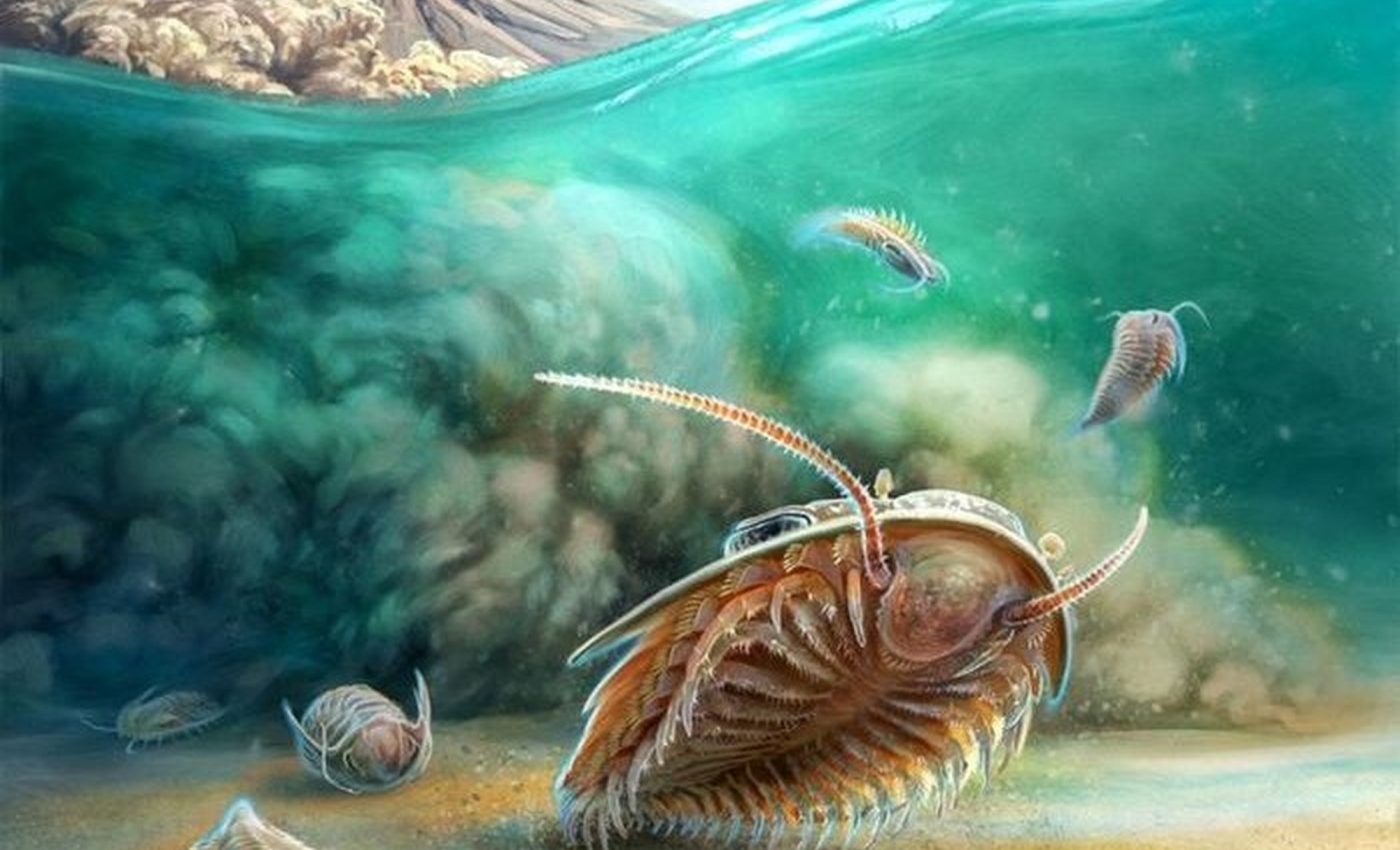
500-million-year-old trilobites fossils preserved in volcanic ash
In a discovery that’s shaking up our understanding of ancient life, scientists have unearthed incredibly well-preserved trilobite fossils in the High Atlas Mountains of Morocco.
Due to their remarkable preservation in volcanic ash, scientists are calling them “Pompeii” trilobites, drawing parallels to the Roman city buried by Mount Vesuvius.
Record of trilobites
Trilobites lived in ancient oceans from around 521 to 252 million years ago. They ate a variety of foods, including plankton, algae, and small marine organisms. Some trilobites were scavengers, feeding on dead material, while others were predators, hunting small prey.
Trilobites shared their habitat with various marine life forms. They coexisted with early mollusks, brachiopods, sponges, and primitive fish. They lived on the sea floor, often burrowing into the sediment or crawling over rocks.
Trilobites had a wide range of sizes and shapes, allowing them to occupy different ecological niches. They played a crucial role in their ecosystems, contributing to the marine food web as both predators and prey.
The fossil record of trilobites helps scientists understand ancient marine environments, shedding light on the diversity and complexity of early life on Earth. Their well-preserved fossils continue to fascinate researchers and collectors alike.
Paleozoic Era
Trilobites were marine arthropods that thrived during the Paleozoic Era, a span of nearly 300 million years. Their remarkable diversity is evident in the over 20,000 identified species, highlighting their significance in Earth’s ancient ecosystems.
While trilobites are well-represented in the fossil record due to their hard exoskeletons, these remains often offer limited insights into the intricacies of their anatomy and behavior.
Crucial details about soft tissues and delicate appendages were often lost to decomposition, leaving scientists with an incomplete understanding of these fascinating creatures.
Fossil in volcanic ash
The Moroccan trilobite fossils, in contrast, offer a level of preservation rarely seen. A volcanic eruption over 500 million years ago resulted in these creatures being encased in volcanic ash, leading to extraordinary preservation of their soft tissues and delicate appendages.
This exceptional fossilization provides scientists with a wealth of information, allowing them to study the trilobites’ legs, antennae, digestive systems, and even minute details like the tiny hairs that once lined their appendages.
“I’ve been studying trilobites for nearly 40 years, but I never felt like I was looking at live animals as much as I have with these ones. I’ve seen a lot of soft anatomy of trilobites, but it’s the 3D preservation here that is truly astounding,” said Dr. Greg Edgecombe, a trilobite expert at the Natural History Museum.
Trilobite anatomy and behavior
Using CT scanning and computer modeling, researchers have been able to digitally dissect these trilobite fossils, revealing details that were previously hidden from view.
They’ve discovered new appendages near the mouth, a fleshy lobe covering the mouth (called a labrum), and specialized leg pairs that give clues about how trilobites fed.
“The results revealed in exquisite detail a clustering of specialised leg pairs around the mouth, giving us a clearer picture of how trilobites fed. The head and body appendages were found to have an inward-facing battery of dense spines, like those of today’s horseshoe crabs,” noted Harry Berks from the University of Bristol.
Volcanic ash: A goldmine for fossil preservation
The discovery of these Pompeii trilobites fossil highlights volcanic ash’s crucial role in preserving ancient life. While volcanic eruptions are typically seen as destructive, they can also create unique conditions for fossilization.
When organisms are rapidly buried in ash, the details of their bodies are locked in before decay can set in. This rapid preservation process captures delicate features that would otherwise be lost over time. As a result, scientists gain valuable insights into the distant past.
These well-preserved trilobites offer a rare glimpse into ancient ecosystems, allowing researchers to study the morphology and behavior of creatures that lived hundreds of millions of years ago.
This find underscores the dual nature of volcanic activity, showcasing its ability to both destroy and preserve, contributing significantly to our understanding of Earth’s prehistoric life.
New chapter in the fossil record
The study of these Moroccan fossils is just beginning, but it’s already clear that they have the potential to revolutionize our understanding of trilobites and their place in the history of life.
By peering into this ancient Pompeii, we are gaining new insights into the anatomy, behavior, and evolution of these fascinating creatures.
“I think pyroclastic deposits should become new targets for study, given their exceptional potential for trapping and preserving biological remains, including delicate soft tissues,” said study lead author Professor Abderrazak El Albani.
“These findings are anticipated to lead to significant discoveries about the evolution of life on our planet Earth.”
The study is published in the journal Science.
Image Credit: © Prof. A. El Albani, Univ. Poitiers.
—–
Like what you read? Subscribe to our newsletter for engaging articles, exclusive content, and the latest updates.
Check us out on EarthSnap, a free app brought to you by Eric Ralls and Earth.com.
—–













